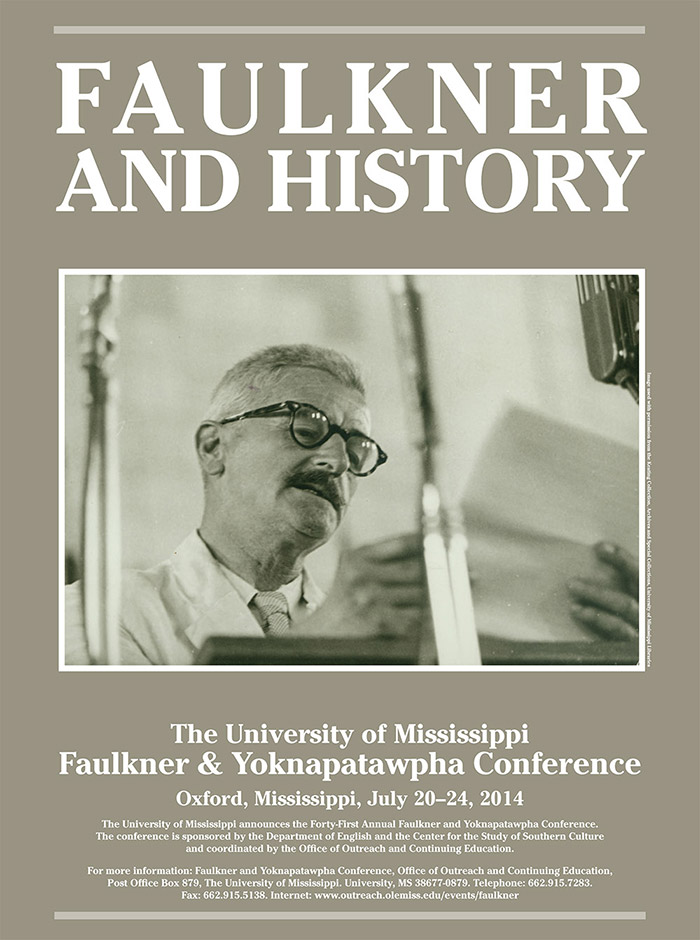
How Faulkner Grappled with the Problem South
Location
Nutt Auditorium
Start Date
22-7-2014 3:30 PM
Description
Much of Faulkner's writing revolves around an image of the South as a backward stagnant region burdened by the past. His novels show characters suffocating under the mythology of the Lost Cause, struggling with the weight of rural poverty, and anxious about shifting race relations and interracial sex. European visitors and northern travelers to the South, such as Harvard historian Albert Bushnell Hart, also wrote extensively about their preoccupation with southern troubles in the post Civil-War Era. This lecture will explore how Faulkner fits into the general historical narrative of the nation's fascination with the "southern problem" in the post Civil-War era. Both northern and southern liberals fashioned an image of the South as the antipode of the North. Many of Faulkner's novels were written in the 1920s and 1930s when the rhetoric of the Problem South had more than reached full stride.
Relational Format
Conference proceeding
Recommended Citation
Ring, Natalie J., "How Faulkner Grappled with the Problem South" (2014). Faulkner and Yoknapatawpha Conference. 18.
https://egrove.olemiss.edu/fy/2014/schedule/18
How Faulkner Grappled with the Problem South
Nutt Auditorium
Much of Faulkner's writing revolves around an image of the South as a backward stagnant region burdened by the past. His novels show characters suffocating under the mythology of the Lost Cause, struggling with the weight of rural poverty, and anxious about shifting race relations and interracial sex. European visitors and northern travelers to the South, such as Harvard historian Albert Bushnell Hart, also wrote extensively about their preoccupation with southern troubles in the post Civil-War Era. This lecture will explore how Faulkner fits into the general historical narrative of the nation's fascination with the "southern problem" in the post Civil-War era. Both northern and southern liberals fashioned an image of the South as the antipode of the North. Many of Faulkner's novels were written in the 1920s and 1930s when the rhetoric of the Problem South had more than reached full stride.

